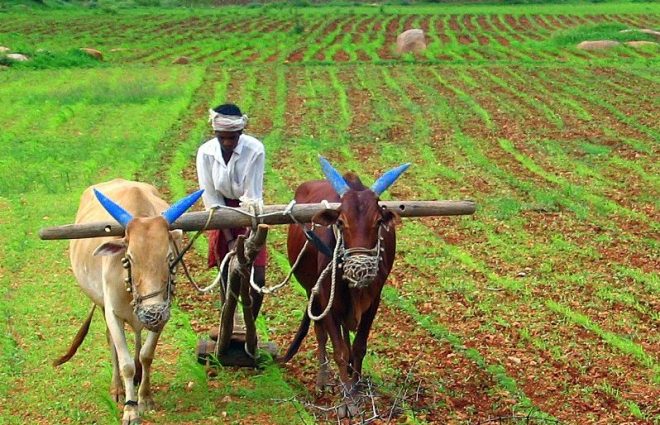The sight of millions of migrant labourers trudging back home on foot was a sight that will haunt the conscience of our society for a long time to come.
With migrants labourers returning to their homes, chances are that a large chunk of them will not return to cities any time soon. The only way to somehow assuage the feelings of the sufferers and atonement by the sinners is to create a framework where distress of such magnitude is never repeated again.
Uplifting Story Amidst Gloom
During the last 25 years it became fashionable among the elite circuit to look down upon agriculture as a sector of insignificance. They would glibly talk about agriculture’s declining role in the Gross Domestic Product (GDP). The share of agriculture in the GDP came down from 57 percent during early 1950s to just over 15 percent today. With this statistics the whole sector was brushed aside into insignificance.
What the venerable “experts” forgot was it still employs more than 60 percent of the Indian workforce directly or indirectly.
When the pandemic struck and the lockdown was announced, manufacturing came to a halt and the services sector reduced to a trickle, this primary activity kept running. Today, in this hour of economic gloom, it has scripted a heartening story.
The bumper Rabi crop (150 million tons) has inspired the Indian Government to set its target at producing a record 298 million tons of grain this year as the sowing area under Kharif crop has witnessed an all around increase.
Area sown to paddy has increased by 37.70 per cent to 34.73 lakh hectare so far in the Kharif (summer) season of the 2020-21. Area sown to pulses has grown to 5.07 lakh hectare from 3.82 lakh hectare last year. Coarse cereals also saw a rise from 5.47 lakh hectare to 8.55 lakh hectares, while oilseeds acreage increased to 8.73 lakh hectare from 6.80 lakh hectare last year. Most of the Rabi crops have been harvested and procured or are under the process of procurement.
Building From Ground Up
Maximum number of rural migrant labourers is employed in urban areas in three sectors – construction, food and small services. The revival of these three sectors right now is a distant dream. It’s time to begin afresh. The new rural economy should be based on three pillars – Storage, Value Addition and Farm-to-fork Supply. The Central as well as state governments should work on war footing to improve the storage facility close to the rural areas. A network of newly designed cold chains that need less electricity or can be run on alternate energy be created to offer villagers a place to safely store their harvest. If they can store it they can bargain better.
Secondly, food processing industry clusters should be created in the hamlets, or towns near villages. Depending upon the size and number of the villages and the distance between them and the closest town the food- processing cluster should be developed at district or block level.
Third village or a cluster of villages (depending upon the number of farmers, quantity of produce and economies of scale) should create their own district supply chains where their produce will be carried by their own people after an online or telephonic negotiation with the buyer to the desired destination.
With farmers being active partners in all the three dimensions of business — production, processing and procurement – their ability to influence the product pricing, profit generation and securing their interest will increase.
Three steps will be enough to ensure a large chunk of rural residents don’t venture out due to distress. They remain gainfully employed in their own homes, earn a decent living and also offer quality product to consumers at a competitive price.
It will also help those who go out to cities in search of work. As their numbers would come down substantially their ability to bargain better wages will increase.
As automation and the use of AI (artificial intelligence) increases in manufacturing the low end jobs will in any case become a thing of past. Before this wave hits the shore and leaves millions of people jobless, it would be better to create an alternative universe where they would not only be gainfully employed but their skills and wisdom, would be better utilized and above all they would be fire-walled from future distress.

Picture courtesy: Wikipedia
(Keshav Chaturvedi uses communication as a tool to help companies prepare and keep their contingency plans battle ready. This is the second of his series on surviving in the post COVID-19 world)
Post COVID-19 World: 5 things companies need to be crisis ready

